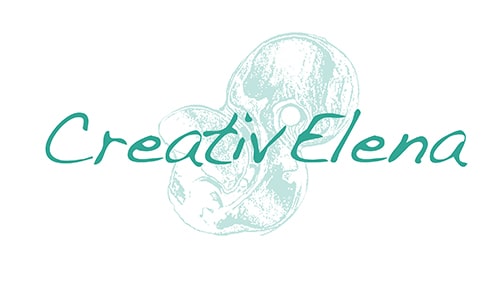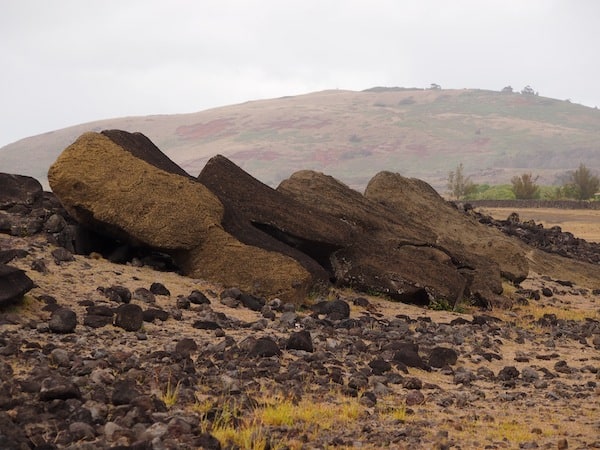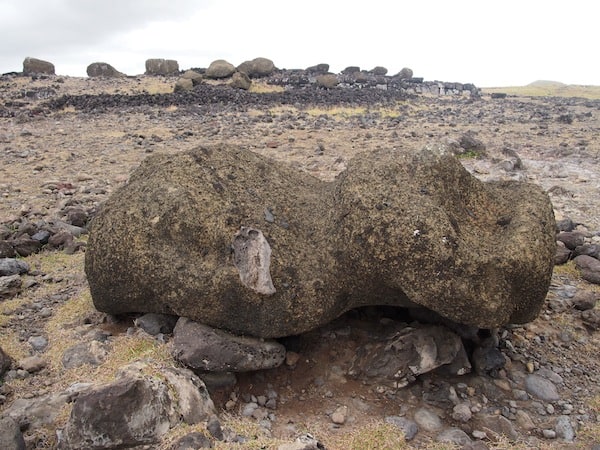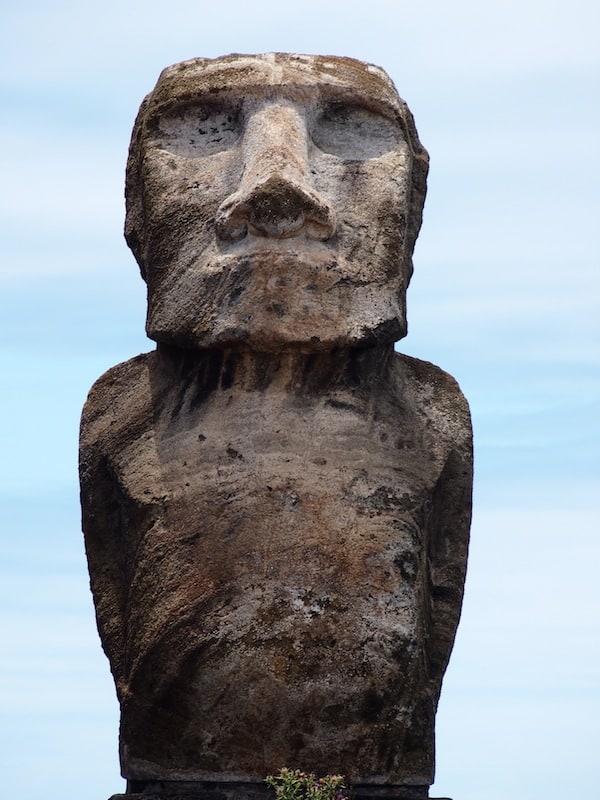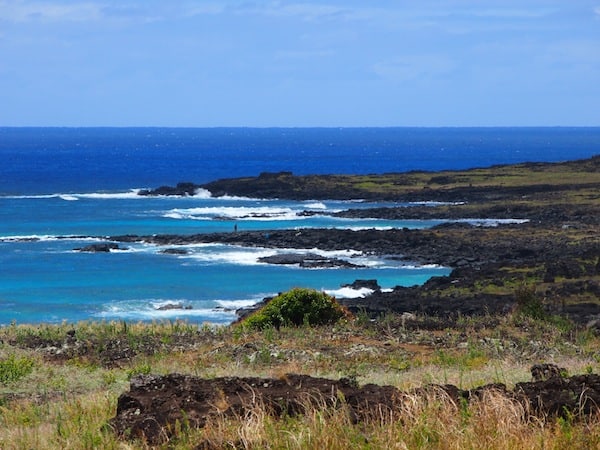The second day in paradise has us embark on a full day excursion getting to know Rapa Nui island. Still high on my emotions from the first day, I wake up happy & calm, ready for the day ahead. Out the window of my apartment, I can see the clouds alternating with the sunshine, what with the wind being surprisingly “chilly” after all. So what was this thing about being in paradise once again?
Paradise, to me, is drinking fresh tropical fruit juices every day – mango, melon, banana, guava, you name it. Less of a paradise is what we are about to hear concerning the history & evolution of the Rapa Nui …
… toppled down Moai. Stories of wartime, cannibalism and slavery. Fast-forwarding a tale of our conditio humana, humanity’s eternal hunger for conquest, has all but left its dentulous marks on an island this tiny little size in the vast expanse of the Pacific Ocean. So what happened? “Oh, the flowers & the trees, virtually everything you see around the village and the island today, is not from Easter Island”, Nune our local history guide for the day, tells us. It is thanks to her wealth of knowledge and cheerful nature that we are able to learn a lot about the complexity of the situation, and historic evolution, on Easter Island. “The last native trees that grow here have been planted from seeds early Norwegian explorers have collected in the past – before they became extinct some 50 yers ago. Only recently, they have again been reintroduced.”
Indeed, what supports Nune’s explanations is the rather barren steppe image of Easter Island today, what with its former lush, subtropical vegetation supporting thousands of migratory birds an utopia of times long gone by. The arrival of the first Polynesian seafarers has been dated to around 700 to 800 AD – and with it the first irreversible changes: Polynesian rats, part of the early people’s diet, feed on the eggs of the seabirds, invasive plants little by little replacing the much slower growing native species. Unfortunately for the island’s ecosystem, we are talking a very tiny island in comparison to other island states, such as New Zealand, hence the impact upon the local ecosystem being especially devastating. The Rapa Nui are only able to maintain their culture and society until the fragile ecosystem of the 12 x 17 x 24 kilometres’ island triangle reaches a tipping point: Scarce wood, perhaps difficulties in sustaining food supplies for a heyday population of 15.000, are said to be the causes for first feuds and later wars among the different tribes here.
In the course of the 17th century, even before Easter Island was discovered by the Western World, war & issues of scarce resources threaten the culture of the Rapa Nui. Things start tumbling down – and with them, the mighty Moai.
Looking at all those Moai, lying face-down on the ground for what must have been centuries now, ends up saddening me deeply. I did not expect this, as this is an image less or hardly propagated outside Easter Island. It is, however, a fact that most Moai around the island lie face down on the ground, witness of a truly eventful history. Only a selected few have been re-erected in the course of the past decades. Check this out.
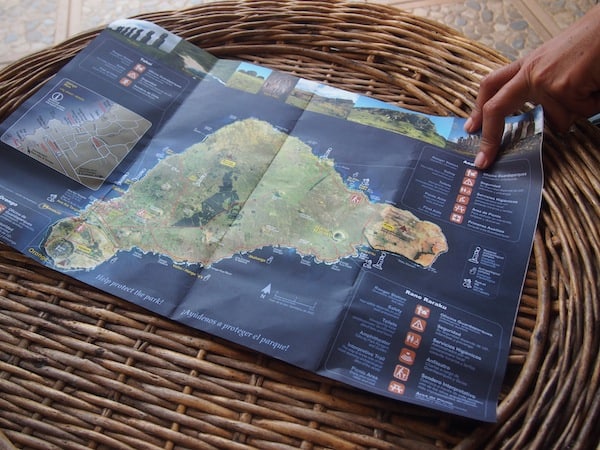
Nune, our local guide during this first day trip exploring Easter Island, explains to us which of the historic sites we are about to visit.
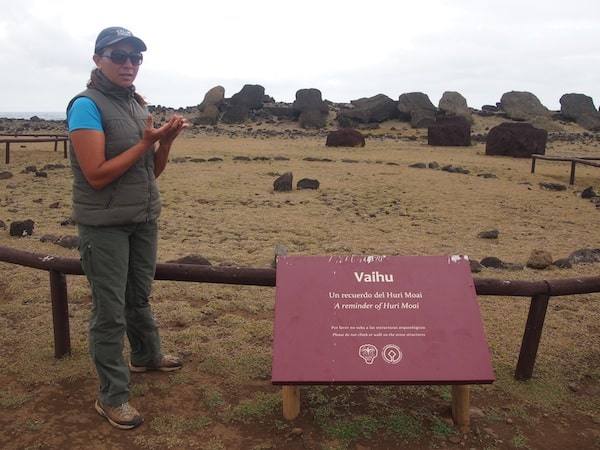
Here, we can see the first ceremonial site of the indigenous people of Easter Island, called Vaihu – with all of its “Huri Moai” being toppled down, a clear sign of war between the different tribes of the island.
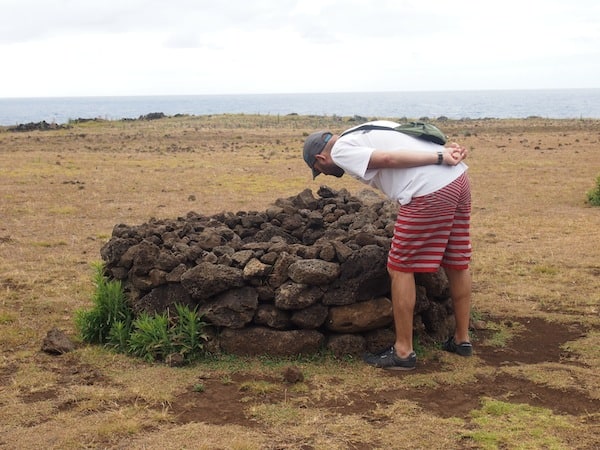
But then again, I have to admit that you cannot fully understand and explain everything from today’s point of view either. A lot of knowledge and context has been lost in the course of history, owing to periods of wartime and Western conquest. Looking at this window of the past …
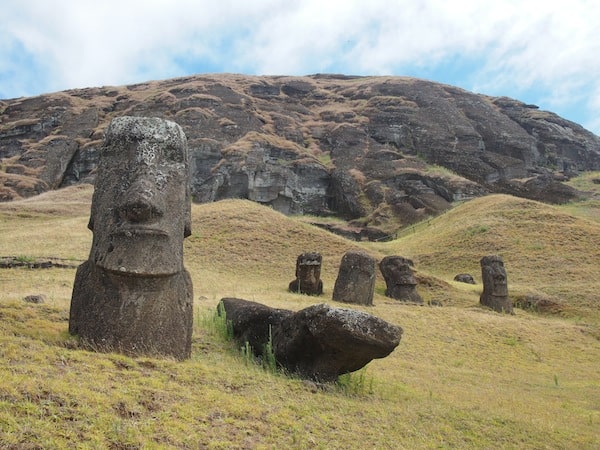
… is as mystical as it is fascinating: Here we are right at the “birthplace” of all Moai that have ever been carved and sculpted from Rano Raraku, the holy mountain on Easter Island.
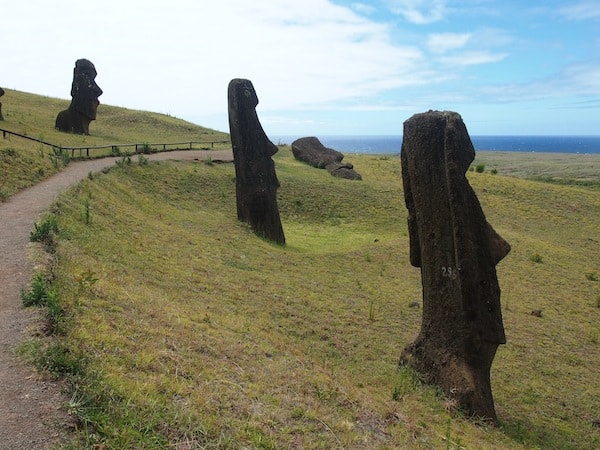
From here, all Moai have “made their way” down the mountain, having been transported to their former ceremonial sites all over the island – just how exactly, remains a mystery forever.
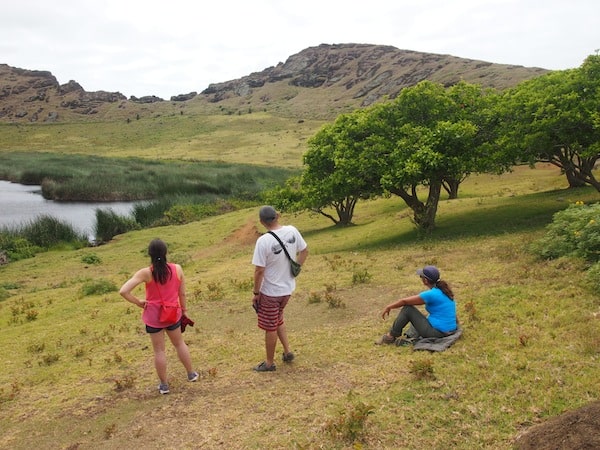
At the inner edge of the extinct volcano’s crater, we can also detect some Moai emerging from the bedrock on the horizon …
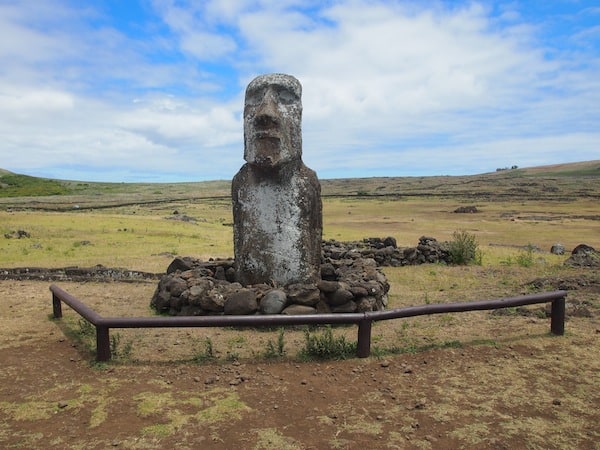
… altogether, some 1.000 Moai have been carved, and erected, during the Rapa Nui heyday spanning more than 500 years! This one here, “El Viajerito”, has even made it to Japan (and back) for an exhibition.
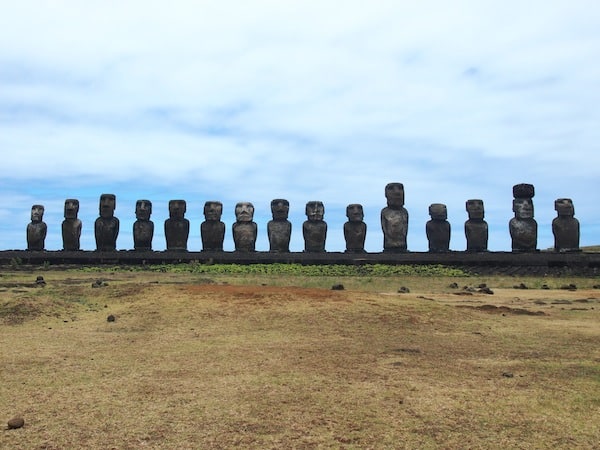
Tonariki is the last site that still has 15 Moai standing: These, too, have once been toppled, even swept inland by a recent tsunami (!) – and re-erected thanks to the support of wealthy Japanese sponsors.
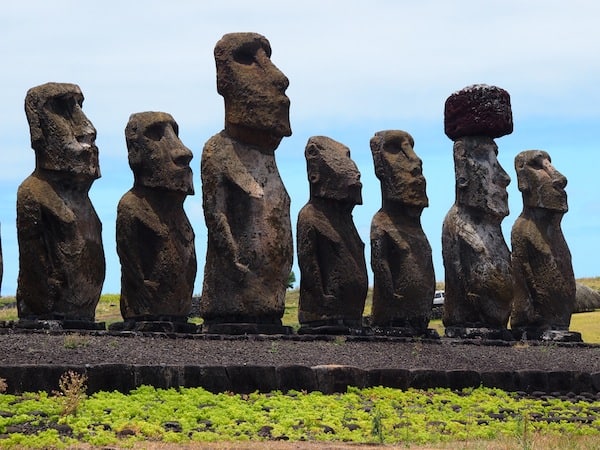
… what with the “assembly of the Elders” & spiritual leaders that the Moai represent, a human achievement unparalleled on this planet. The largest Moai here, 10 metres tall, even weighs 80 tons!
Fascinating. I am impressed. Easter Island leaves me full of emotions, a new level of consciousness & just so much more (spiritual) energy. I can only recommend you to come here and see for yourself, taking that time of your life to feel and live the magic.!
Last but not least, we end our day with a visit of the island’s only sandy beach, Anakena in the north. Driving there, we are greeted by turquoise sea bays, perfectly shaped rocks, palm trees and of course, Moai lined up right by the beach. WOW! What a sight, really … once more, the magic invades me honouring my presence on this very particular, very special spot on Earth.
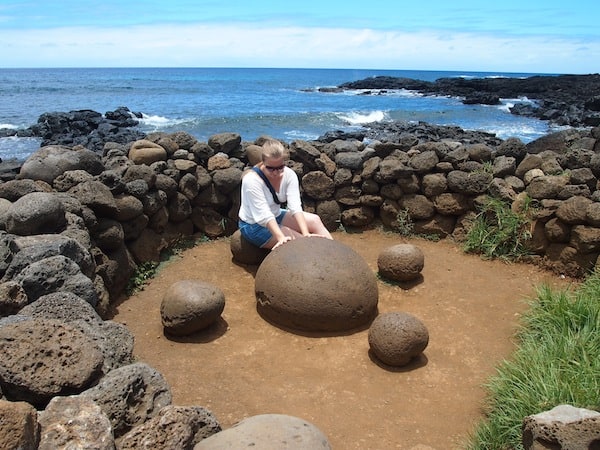
… make me happy: Here, I charge my batteries on a rock that is said to be special for its magnetic properties.
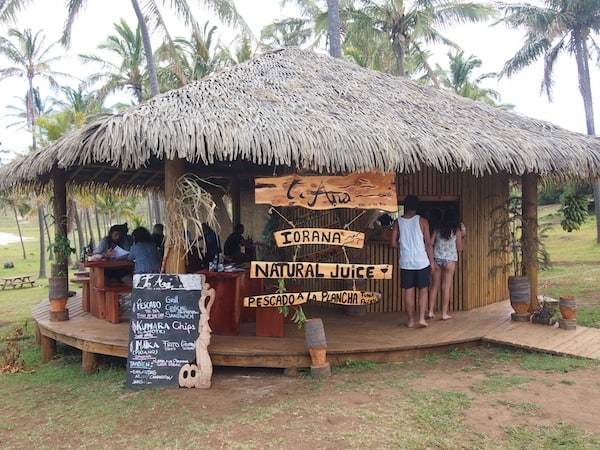
Anakena welcomes us with the island’s typical greeting, “Iorana” in the language of the Rapa Nui, complete with comfy, inviting little huts.
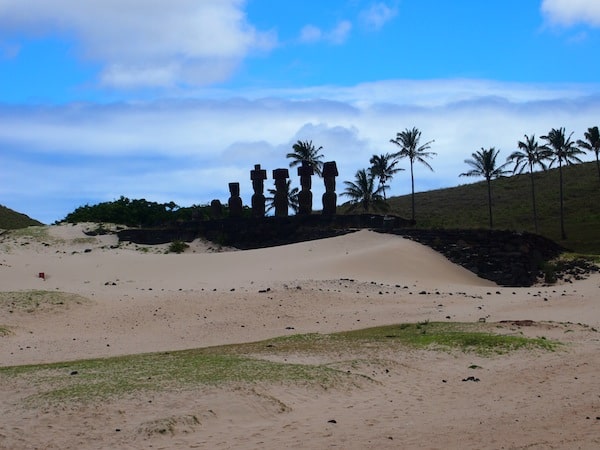
Here, too, we can see the Moai that have been re-erected on their former platforms, following extensive archaeological studies.
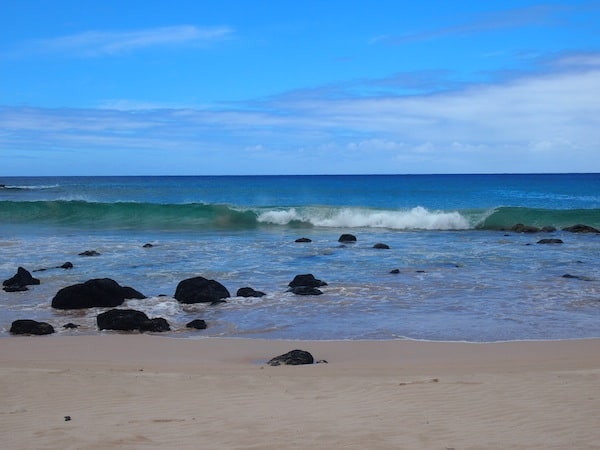
Last but not least, I simply let go, allowing myself to be carried away by these warm, turquoise waters that wrap me up body, mind & soul, diluting my thoughts from this intensive day full of culture travel here on Rapa Nui. Maururu, Te Pito O Te Henua – Thank you for all those emotions & understanding, dear Easter Island!
For even more magic from Easter Island, head on over to my Flickr Photo Gallery here:
I have also written & published the following stories about Easter Island:
- Dream Destination Diaries: “Sweet Sandy Beaches & Mystical Moai Meditations on Easter Island“
- Dream Destination Diaries: “Sensing ‘Te Pito O Te Henua‘, The Navel of the World“
- Dream Destination Diaries: “Enchanting Easter Island“
Hope you enjoy! 🙂
